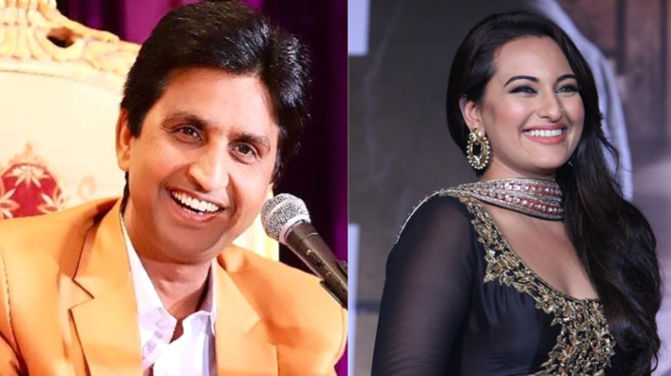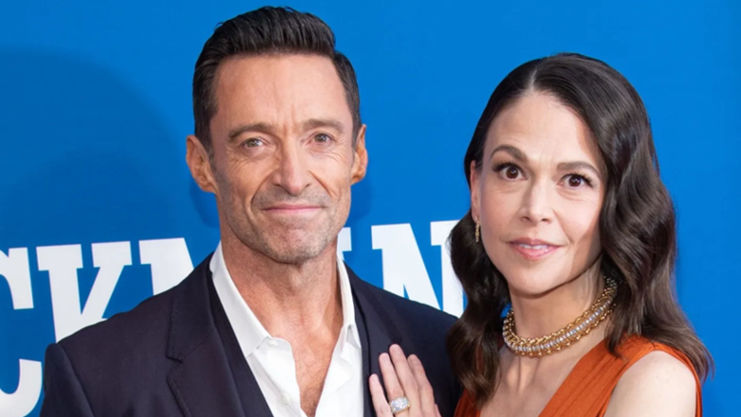India, we were being repeatedly told, had discovered new magic. Suddenly, the world wanted to be where we were. And we wanted to be ever where in the world. From the High Table of world powers to a putative member of the reformed UN Security Council. Political leaders unknown to the world till yesterday except for unwholesome memories of Gujarat 2002 were aspiring to outstrip Jawaharlal Nehru. Then the CAA protests got noticed across the globe; doubts were voiced in Turkey and Malaysia. Gradually the OIC and Kuwait changed their tenor. Then in quick succession the UK and other European friends began to demur. Closer home, Bangladesh and Sri Lanka began to underscore concerns, albeit mildly. Then suddenly Nepal and China exploded. The best laid plans of mice and men went awry. Covid-19 added its bitter taste.
The details of the points of contestation on the Chinese front, as indeed the Nepal front, have been widely presented in the national media with a degree of incredulousness but thankfully with controlled negativity. But it is well beyond the pretense that it is something routine or minor. Maps with unpronounceable remote stations are common place in the media.
Indian soldiers admittedly have been engaged in a standoff with their Chinese counterparts along the LAC about which the countries are said to have a difference of perception. As New Delhi somewhat belatedly gathered its best brains to prepare a strategy to resolve the latest dispute with China, another neighbour, Nepal, discovered sudden belligerence.
India’s latest diplomatic row with Nepal erupted on 8 May when New Delhi announced the inauguration of a Himalayan road link that Kathmandu believes passes through the disputed area of Kalapani for some 17 km. Under intense pressure from the opposition, civil society and the Nepali press, Prime Minister Khadga Prasad Sharma Oli took the unprecedented step to have Parliament endorse a new political map of the country, showing Kalapani, Lipulekh and Limpiyadhura within its borders. India naturally objected to the new Nepal map having “included parts of the Indian territory”. In November 2019, India’s new political map showed Kalapani within India. The step saw Nepal’s capital Kathmandu rocked in protest giving vent to a simmering feeling of some time, but the Indian government chose to shrug it off.
An ill-time remark by Indian Army Chief General Manoj Mukund Naravane, suggesting that Kathmandu might have acted at the behest of someone else (read China) provoked Nepal’s Defence Minister Ishwor Pokhrel to call General Naravane’s comments an insult to the Nepali soldiers working in the Indian Army. Nearly 40,000 Nepali Gurkha soldiers are part of 40 battalions. Besides, the Indian Army Chief is also an Honorary General of Nepalese Army. Prime Minister Oli’s remarks about the “Indian virus” spreading the coronavirus pandemic into Nepal was the unkindest cut of all. We must understand that Oli’s hard nationalist posturing is conditioned by his domestic audience as well as to consolidate his slippery position within his party. Knowing that China is all too keen to take advantage, our hyper nationalist media and TV Rambos might irreversibly hurt Indo-Nepalese relations. But then how long will the pigeons not come home to roost?
It is pointed out that Nepal has objections to the 2015 bilateral agreement between India and China that opened up Lipulekh for trade. Nepal’s position thus has remained consistent despite successive governments.
India on the other hand has consistently argued that the road is completely within its territory, but Nepal says that the road crosses over to the east bank of the Mahakali river and therefore into their territory. This is based on the 1816 Sugauli treaty signed with British colonial rulers. Nepal’s biggest-selling newspaper, purportedly, presented the historical evidence: Five British-Indian maps issued between 1819 and 1894 that show Limpiyadhura as the headwaters of the Mahakali; a 1904 letter written by then Prime Minister Rana Chandra Shamsher to village chiefs of the triangle; and evidence of a 1958 voter list and the 1961 Census by Nepali authorities in the region.
The core of the dispute is in the cartographic interpretation of the headwaters of the Mahakali river. Nepal insists Limpiyadhura is the location of the headwaters; India regards a smaller stream flowing down from Lipulekh as the river’s headwaters. The dispute is to be seen in the context of the presence of Indian troops in Kalapani from before the 1962 war with China.
The disagreement appears to have hardened considerably the Nepal Prime Minister’s earlier observation on a possible solution of road leasing to India, which seemed promising and consistent with our historical attitudes, but since then, we have only seen moves from both sides that have raised the temperature giving it a political flavour that makes resolution difficult. Dialogue more difficult. Nepal’s earlier demands were focused on the withdrawal of troops from Kalapani; its recent position now includes the insistence of Limpiyadhura as the headwaters.
The presence of the Indian Army at the trijunction between India, China and Nepal complicates the matter. Strategically withdrawal of troops, as Nepal demands, is obviously unacceptable to India now. Past proposals where India would withdraw its troops while Nepal would guarantee Indian security interests in the region are nonstarters, especially now.
The situation is critical to India-Nepal relations but in addition there is the background of the India-China border dispute along the Line of Actual Control (LAC). Then we must not forget that Nepal’s ruling Communist Party has reached out to China for investment and better connectivity in recent years, which is a matter of discomfort for India. Yet, Beijing’s guarded position that Kalapani is a bilateral issue between India and Nepal is interesting since the road in question from India’s point of view is a result of its 2015 agreement.
These tensions with our neighbour — the second over Kalapani in six months and the most serious bilateral dispute since the 2015 unofficial blockade — do not auger well for India as it searches for a more prominent place in world affairs.
Meanwhile all is far from well on the Chinese front. Video clips and photographs of Indian soldiers in custody of the PLA are being circulated. India has moved additional troops along its northern border in a parallel move to the Chinese deployment of about 5,000 soldiers and armoured vehicles within its side of the disputed border in the Ladakh region. India is adding a similar number of troops as well as artillery guns along the border to fend off the continuing incursions by the Chinese army. Reports of the Chinese having intruded up to 15 km into Indian territory takes us far beyond the conventional difference of perception about the LAC explanation.
The most recent standoff began on 5 May, when troops clashed on the banks of Pangong Tso — a glacial lake at 14,000 ft in the Tibetan plateau — leaving scores of soldiers on both sides injured. Since then we have seen a steady build-up of troops amid continuing reports of face-offs and inconsistent statements by government sources. Transgressions that used to make the BJP fume are being treated as common place events. Diplomats of the two sides have swiftly sought upgraded talks after negotiations between Indian and Chinese military officials on 22-23 May brought no results. China’s current move to step up incursions at two different locations along the 3,488-km undemarcated LAC is a marked deviation from its restrained attempts to intrude and depart without raising things to a pitch that led the two nations to go to war in 1962.
Despite these developments, Beijing has reiterated its commitment to safeguarding peace and stability in the border areas. Foreign Ministry spokesperson Zhao Lijian said that the two countries had good border-related mechanisms and communications channels. But then why should these face-offs be taking place?
Prime Minister Narendra Modi is reported to have discussed the stand-off with National Security Adviser Ajit Doval and Chief of Defence Staff General Bipin Rawat and chiefs of its three armed services. A somewhat timorous media reported that the meeting centred around options available to India, and that it was decided to go the diplomatic route while maintaining a tough military posture at the border. One might guess where that is coming from.
It is not hard to see that China’s actions along the Indian border coincide with its attempts to consolidate political and strategic positions across Asia and to harden its positions on the US. The developments in Hong Kong, raised tensions in the South China Sea by continuing rejection of the Arbitral Award to thwart the efforts of Vietnam, the Philippines and Malaysia to exploit oil, gas and fishing resources off their shores, a sustained campaign to prevent Taiwan rejoining WHO even as the US questioned the world body’s integrity on the Wuhan virus issue and along with Europe and Australia severely criticised China for its handling of the pandemic, have all somewhat isolated China. The latter, in turn, has accused the US of pushing the world into a new Cold War.
Despite PM Modi’s public display of friendship with President Xi Jinping by inter alia sharing a swing, surely China has not been oblivious of India’s tilt towards the US. The presence of important Indian personalities at international gatherings that discuss containment plans for China and sidelining China through conceptualising the Indo-Pacific paradigm might have been seen as India going too far even as we see China’s footprints in the Indian Ocean, particularly Sri Lanka, Maldives, Bangladesh getting too deep for comfort. India must — and will have to — sort out the landscape for itself instead of following the self-interest of the US, and that too under President Trump.
The immediate trigger for the current tensions with India may have been the completion of a road and bridge in the Galwan sector in Ladakh. Over the period India has been building border infrastructure that was woefully lacking and certainly far below what the Chinese have. As they have moved air force squadrons closer to Indian territory, we have had to activate high-altitude air strips and roads for emergency landings. The Lt General talks now proposed might deescalate immediate tension but can hardly address the larger issue. PM Modi is supposed to have a dream team that includes NSA Ajit Doval and External Affairs Minister S. Jaishankar, credited with the resolution of the Doklam crisis. Will they find repairing relations with China under PM Modi’s watch easier than the State Department does under President Trump? That is truly a million dollar, well yen, question.
Chinese border intrusions appear to have escalated last year when India changed the status of Jammu & Kashmir and Ladakh in August 2019 to bring them under Central government control. Now if experts are to be believed, the current standoff is far more serious than the Doklam crisis of 2017, particularly as it comes after and despite moving on from there. Have we been telling the truth and the whole truth to the country over the months? Or, is the disturbed dust of the LAC swept under the carpet with self-congratulatory gestures even as it accumulates for another day of reckoning. Perhaps it is still not too late to take an honest stock and find the right balance between our inclination to play the bigleague games of world diplomacy and sorting out problems of history in our own backyard. We might begin with asking a fundamental question, “What does China want?” and “What does India want?” The answer will have a great deal to do with what is honestly possible. Sterile mind games must give way to pragmatism. Telephone calls must be made between Xi and Modi, not Modi and Trump.
The writer is senior Congress leader and former Minister of External Affairs.







